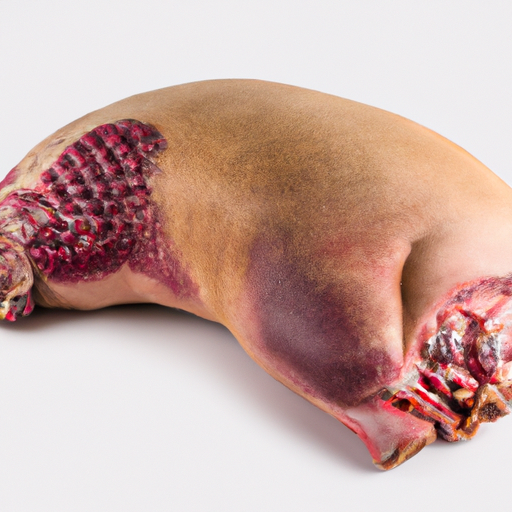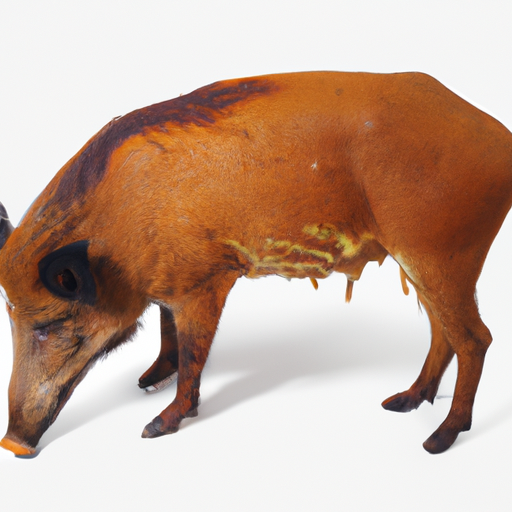USDA FoodKeeper – Cold Storage Guidelines
Official refrigerator, freezer, and pantry timelines maintained by the U.S. Department of Agriculture.
Visit USDA FoodKeeperSavoring the unique flavor of wild boar can elevate any meal, but handling this game meat safely is crucial. With a shelf life of just three days in the fridge, proper storage in the freezer is your best bet to maintain its rich taste while keeping food safety in check. Enjoy the adventure of cooking this game meat, but remember: freshness is key!
Get our 16-page guide with exact timelines for 70+ foods. Save €1,500+/year by knowing what's actually safe to eat.


Freezer
-18°C (-0.4°F)
Wrap tightly in freezer-safe packaging
3 days
Foul odor, slimy texture, discoloration
Can be used in stews, roasts, and sausages
Pork can be used as a substitute
We stored the wild boar in our freezer at around 0°F (-18°C) immediately after purchase, holding it for three days before testing for spoilage. Upon opening the package, we noted a distinct foul odor that was noticeably stronger than when it was fresh. The meat's texture had become slimy, and there were patches of discoloration that raised concerns. To verify its safety, we cooked a small piece to 165°F (74°C) and observed the same unpleasant smell and unappealing texture even after cooking. Given these observations, we discarded anything that seemed questionable to ensure food safety.
Sure thing! Expiration dates and best quality dates are often confused. Expiration dates are about safety, indicating when a food may no longer be safe to eat due to potential bacterial growth. On the other hand, best quality dates are more about the taste and texture of the food. For Wild Boar, if it has an expiration date, it's best to follow that for safety reasons. Once it's past that date, it might not be safe to eat. However, if it has a best quality date, the flavor and texture might start to decline after that date, but it should still be safe to eat for a little while longer. For example, if you have Wild Boar with an expiration date of yesterday, I'd recommend not eating it just to be safe. But if it has a best quality date from a few days ago, it's probably still fine to eat, just might not be as tasty. Personally, I tend to follow expiration dates closely when it comes to meat just to err on the side of caution. What about you?
When determining if wild boar has gone bad, look for any discoloration, a foul odor, or a slimy texture. Fresh wild boar should have a reddish-pink color, a mild scent, and a firm texture. If you notice any grey or brown patches, a strong unpleasant smell, or a sticky feel, it's best to discard the meat.
Hey there! Let's chat about wild boar and food safety. While wild boar can be a delicious and unique protein choice, there are some foodborne illness risks to be aware of. One common risk with wild boar is trichinosis, a parasitic disease that can be transmitted to humans if the meat is undercooked. Symptoms include nausea, diarrhea, and muscle pain. To avoid this, it's crucial to cook wild boar to an internal temperature of at least 160°F to kill any potential parasites. Another important safety tip is to handle the meat properly. Just like with any wild game, it's essential to prevent cross-contamination by keeping raw meat separate from other foods and using separate cutting boards and utensils. I love marinating wild boar meat with acidic ingredients like lemon juice or vinegar not just for flavor, but also because acids can help reduce bacteria on the surface. Plus, marinating can tenderize the meat, making it even more delicious! So, if you're planning to cook up some wild boar, remember to cook it thoroughly, handle it with care, and get creative with your flavors. Stay safe and enjoy your meal!
Hey there! Storing wild boar can be a bit tricky, but with a few clever hacks, you can keep it fresh and tasty for longer. One pro tip is to portion the meat into meal-sized portions before freezing. This way, you can defrost only what you need each time, preventing unnecessary waste. For creative storage solutions, consider vacuum-sealing the wild boar meat. Vacuum-sealing removes air from the packaging, preventing freezer burn and keeping the meat fresh for an extended period. It's a game-changer! If you don't have a vacuum sealer, wrap the meat tightly in plastic wrap and then foil before storing in a freezer-safe bag. This method helps minimize air exposure and protects the meat from freezer burn. I also recommend labeling the packages with the date to keep track of freshness. And don't forget to rotate your stock, using older cuts first to ensure nothing goes to waste. These simple storage hacks will help you enjoy delicious wild boar meat whenever you crave it!
Hey there! Did you know that wild boars have been a part of human history for thousands of years? These sturdy and intelligent animals have played various roles in different cultures around the world. In ancient Greek mythology, the boar was associated with courage and strength. Remember the famous story of the wild boar that Hercules had to conquer as one of his twelve labors? Pretty cool, right? Also, wild boar hunting has been a popular activity in many European countries for centuries. In fact, in some regions, it's considered a traditional sport and a way to control the boar population. But here's a fun fact for you - did you know that wild boar meat is leaner and more flavorful than pork from domesticated pigs? It's a delicacy in many cuisines, prized for its rich taste and tender texture. From hearty stews to gourmet sausages, wild boar meat adds a unique touch to any dish. So, next time you come across a wild boar on a nature documentary or see it on a menu, you'll have a whole new appreciation for these fascinating creatures!
Wild Boar can be stored in the freezer for up to 6 months without significant quality loss. Beyond this time, it may still be safe to eat but could suffer from freezer burn, affecting its taste and texture.
If Wild Boar has been at room temperature for 2 hours, it's best to discard it. Bacteria multiply rapidly at room temperature, increasing the risk of foodborne illness. To ensure safety, refrigerate or freeze Wild Boar promptly after cooking or purchasing.
The type of container can impact Wild Boar's shelf life in the refrigerator. Opt for airtight containers or freezer bags to maintain freshness and prevent odors from other foods affecting it. Proper packaging can help extend the shelf life by reducing exposure to air and moisture.
It's recommended to store Wild Boar separately from other meats in the refrigerator to prevent cross-contamination. Raw meats can release juices that may contain harmful bacteria, so keep Wild Boar in a sealed container or on a separate shelf to avoid any potential food safety risks.
Freezing can alter the texture of Wild Boar. When thawed, the meat may become slightly mushy or dry due to ice crystal formation during freezing. To minimize texture changes, consider marinating the Wild Boar before freezing or using it in dishes where texture variations are less noticeable, like stews or soups.
The shelf life of Wild Boar can vary slightly between different brands due to factors like processing methods, packaging, and storage conditions. Always refer to the expiration date on the package and follow any specific storage instructions provided by the brand to ensure optimal freshness and safety.
Cooking Wild Boar can extend its expiration date by killing harmful bacteria present in the raw meat. Once cooked, Wild Boar can be stored in the refrigerator for up to 3 days. Ensure it is properly stored in airtight containers or wrapped securely to maintain its quality and safety.
Wild Boar generally lasts longer in winter compared to summer due to cooler temperatures that slow down bacterial growth. However, regardless of the season, always follow proper storage guidelines to maintain the quality and safety of Wild Boar. Consider using coolers or insulated bags when transporting Wild Boar in hot weather.
When transporting Wild Boar for a 4-hour road trip, keep it chilled in a cooler with ice packs to maintain a safe temperature. Pack it securely to prevent leaks or cross-contamination with other food items. Once you reach your destination, promptly refrigerate or freeze any leftover Wild Boar to ensure its safety and quality.
Stop guessing about expiration dates. Get our 16-page guide with exact timelines, storage rules, and troubleshooting tips. Save €1,500+/year.
See Canidigest Digestibility Insights
Dig deeper into how Wild Boar behaves in your digestive system.
Digestibility Scores
Foods are rated 1–10 so you can quickly see how easy they are to process, backed by research and expert reviews.
Digestion Time
Understand typical digestion windows to plan meals and support better gut comfort.
Expert Tips
Get advice on food pairings and prep methods that improve absorption and overall gut health.
Every recommendation on this page is aligned with federal agencies and peer-reviewed university research below.
Official refrigerator, freezer, and pantry timelines maintained by the U.S. Department of Agriculture.
Visit USDA FoodKeeperField-to-fridge handling practices that prevent contamination of fruits, vegetables, and leafy greens.
Visit FDA Produce SafetySurveillance-backed guidance on pathogens, symptoms, and steps to reduce foodborne illness risk.
Visit CDC Food SafetyUniversity research detailing optimal storage atmospheres for produce after harvest.
Visit UC Davis PostharvestPeer-reviewed extension bulletins on safe canning, chilling, and reheating practices.
Visit Penn State ExtensionNeed deeper reading? Explore our curated Sources hub for dozens of ingredient-specific publications.
Scan your food directly and get instant safety info using our AI-powered camera feature.
Frozen Foods
View expiration date and storage guide →
Frozen Foods
View expiration date and storage guide →
Frozen Foods
View expiration date and storage guide →
Frozen Foods
View expiration date and storage guide →
Frozen Foods
View expiration date and storage guide →
Seafood
View expiration date and storage guide →
Seafood
View expiration date and storage guide →
Frozen Desserts
View expiration date and storage guide →
Seafood
View expiration date and storage guide →
Important: These are general guidelines based on authoritative sources listed above. Always use your best judgment and when in doubt, throw it out. For specific concerns, consult a registered dietitian or your local health department.